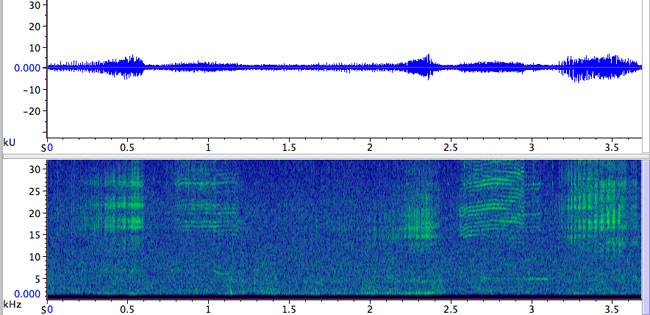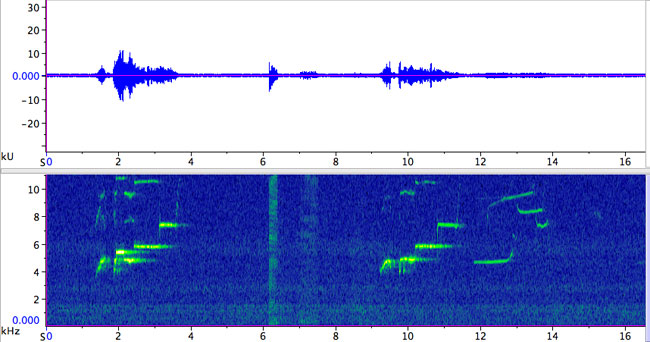White Beaked Dolphin Sounds
The white beaked dolphin is the most common dolphin species in Icelandic waters.
Below are two sound examples recorded in Skjálfandi Bay.
Dolphin echolocation click bursts
The whole year a round you can hear dolphins whistle and echolocate in Skjálfandi bay. In this recording you can hear an active echolocation session from white-beaked dolphins in Skjálfandi bay. Like other toothed whales the dolphins use broad-banded echolocation pulses to navigate through the murky waters and to find pray. The echolocation pulses work like submarine sonars. The recording is slowed down by one third to allow the human ear to detect the echolocation pulses better.
Audio Player

White-beaked dolphin whistles.
Like most other dolphin species, the white-beaked dolphins use a variety of whistles when socializing. They can produce whistles at very high frequencies, or up to 35 kHz, which is higher than most dolphin species are capable of. As a comparison, the human audibility range is 20 Hz – 20 kHz. So, we cannot hear the high frequency component of the whistles unless we slow down the recordings. In this sound file the whistles are within the audibility range of humans and therefore we can listen to the real whistles without any modification.
These whistles were recorded in Skjálfandi bay during the spring. The whistles tell us that these dolphins were socializing but not traveling or resting. In between the whistles, you can hear some echolocation buzzes which the dolphins use to navigate or to localize items, such as pray or even toys.

